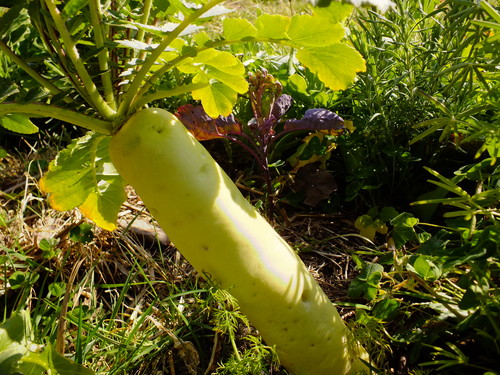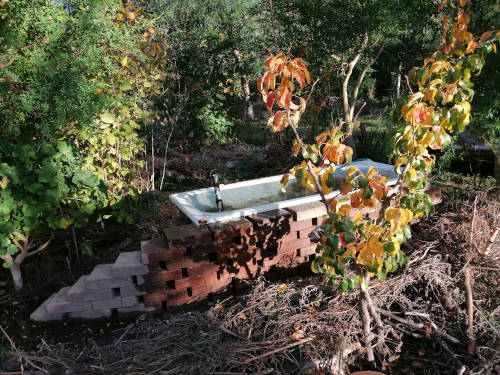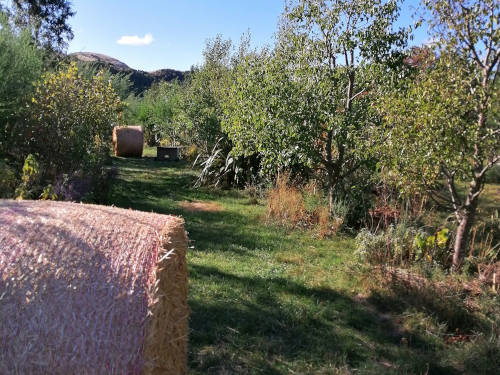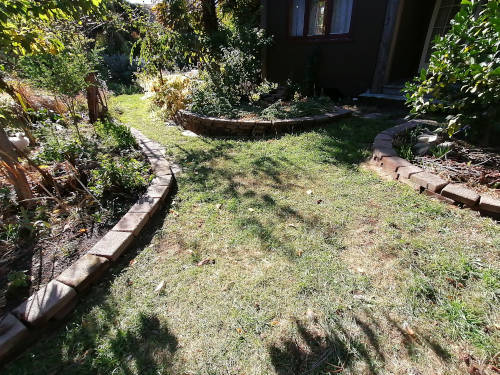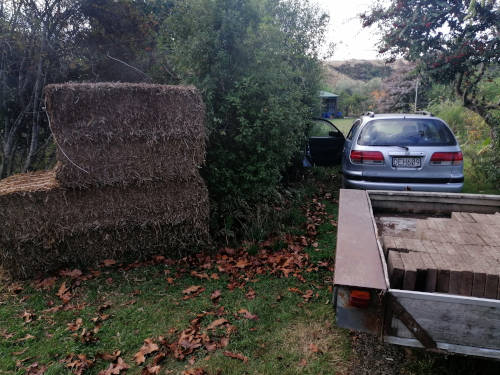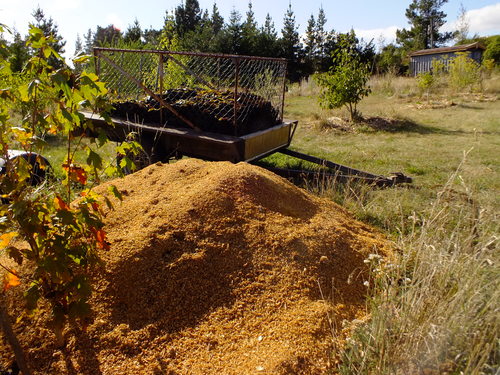Building great soil with mulch
Mulching is the practice or process of covering the soil with a thick layer of organic matter. This has a number of benefits depending on the mulch material and desired outcomes.
In our climate we generally like to use as much mulch as we can get. The only issues I am aware of are that birds like to spread it around looking for slugs and in very wet or humid locations it can exacerbate fungal issues.
Some of the benefits obtained from mulch include:
-
Keeping soil moisture from evaporating
-
Smothering weeds
-
Moderate soil temperature fluctuations
-
Makes a landscape look tidy and purposeful
Every 1% of organic matter in the soil enables absorption of:
154,000 litres per hectare which is 15.4 litres per square meter or 15.4mm of rainfall
Organic, biodegradable mulch materials aid and contribute to soil building through increased activity of micro-organisms which in turn decreases compaction and improves water absorption. Layers of rocks, pebbles or broken concrete capture and condense mist and fog which then seeps through to water nearby plants.
Comparing mulching options
|
Type of Mulch |
Advantages |
Concerns |
|
Grass clippings |
Is cheap, readily available, and easy to apply |
Decays quickly, so you must replenish often. If you use weed killers on your lawn or nitrogen-heavy fertilizer, it may adversely affect other parts of the garden; can turn slimy if you apply more than an inch or so at a time; if the grass goes to seed before you cut it, the grass seeds can germinate in your garden beds. |
|
Wood or bark chips |
Looks neat and attractive; stays where you put it; is slow to decay |
Pine bark mulch is fairly acidic, which you may or may not want for your garden |
|
Decaying leaves |
Smothers weeds very well; helps hold in soil moisture |
Is not especially attractive; if it contains seeds, they can germinate and become a weed problem; if the leaves are soft, like maple leaves, the mulch can mat; if it's acidic (oak especially), it can lower your garden soil's pH |
|
Compost |
Is free and plentiful if you have your own compost pile; adds nutrients to the soil as it breaks down |
Makes a good place for weeds to take hold; fresh compost (especially if it contains manure or grass clippings) can burn plants |
|
Peat moss |
Looks neat and tidy; is versatile — also functions as a soil amendment |
Can be expensive; if dry, will repel water; becomes crusty over time |
|
Straw |
Is cheap and easy to apply |
Is so light it can blow or drift away; may harbor rodents, especially over the winter months; isn't very attractive for ornamental plantings |
|
Hay |
Is cheap and easy to apply |
May harbor rodents, especially over the winter months; isn't very attractive for ornamental plantings; probably contains weed seeds! |
|
Gravel, pebbles, or stone |
Has a nice, neat look (though not "natural"); is easy to apply; won't wash away easily and will last a long time; doesn't need to be replenished over the course of a season in colder climates |
Can allow weeds to sneak through; provides no benefits to the soil |
|
Landscape fabric (garden plastic, black plastic) |
Keeps weeds at bay; holds soil moisture and warmth in |
Watering and feeding is hard (you need to cut openings for plants); can be difficult to apply unless you're doing an entire area at one time; isn't very attractive |
One popular technique that we employ when establishing new gardens is to make a layered mulch. After pre-watering the area for some time start with animal manure followed by several layers of brown cardboard and topped with leaves or straw.
Flattened cardboard boxes with plastic tape removed can easily be obtained (the bigger the better) from recycling stations or many retail stores. Cut an X through the cardboard and plant into it. You may want to introduce a small pocket of compost if the soil beneath is poor.
The cardboard slowly breaks down and as long as you plant ground cover at sufficiently close spacing then by the time it is gone the grass is essentially replaced.
Any prunings and woody material that is no good for firewood should be chipped or shredded and used as mulch.
Improving soil quality and fertility
Essentially any organic matter you can add from off site (or not remove from the site) will contribute to the overall fertility of the system as it breaks down and is incorporated into the soil.
Growing plants on site for the purpose of chopping it is an easy way to get mulch materials. We grow fennel, raddish and comfrey as their deep roots help loosen and aerate the soil while mining subsoil nutrient and quickly producing a lot of above ground biomass.
When organic matter such as wood, bones, meat etc are removed from a site the overall mineral reserves are reduced. We try and operate a closed loop system, taking as little off site as possible and continually importing biodegradable such a seaweed, leaves and needles, sawdust and lime.
Whole trees can be composted using a technique known as hugelkultur. This is essentially just buried logs and wood that is then planted into.
